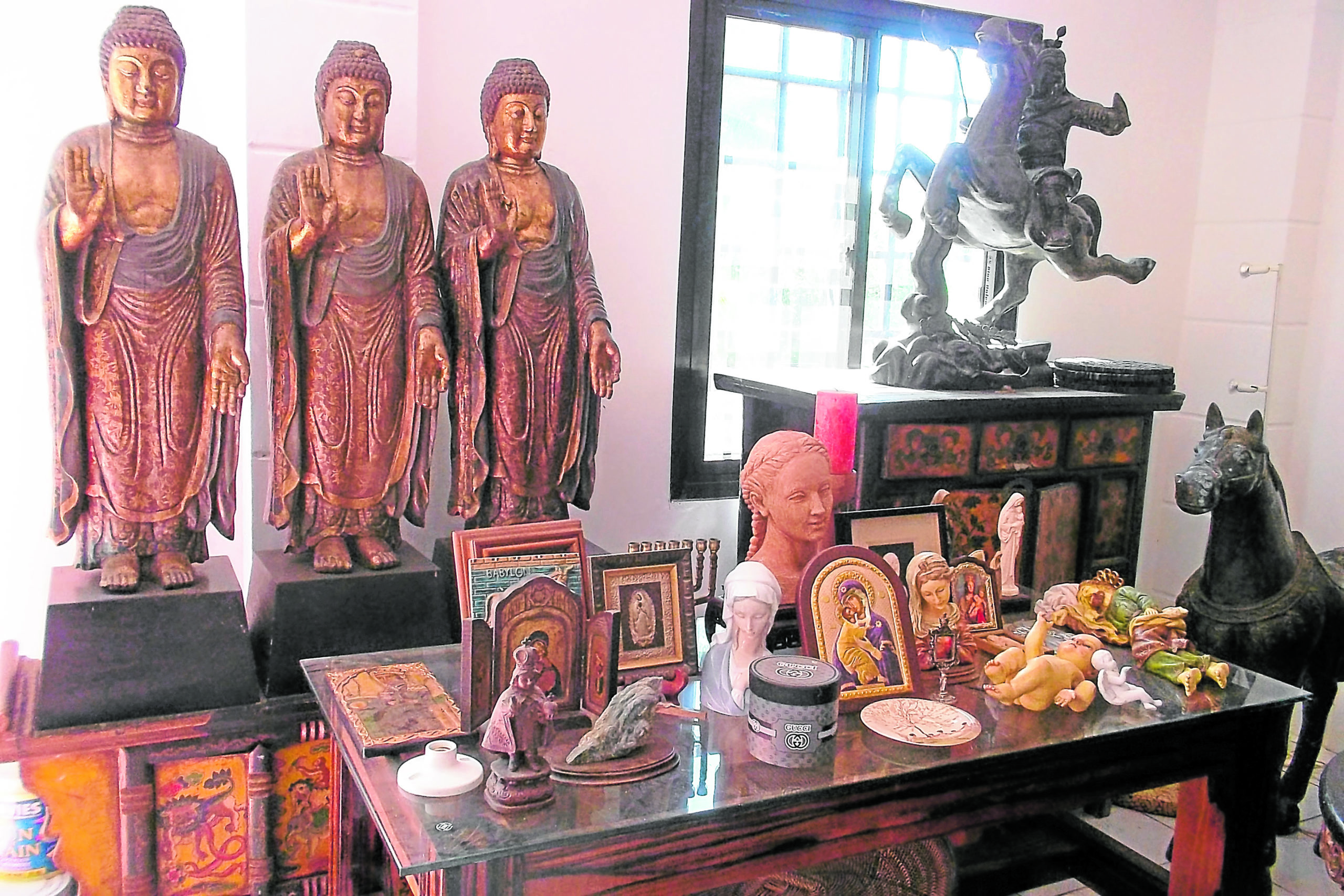
The progressive, little town of Bongabon in Nueva Ecija lies at the foothills of the mighty Sierra Madre ranges. And tucked away in its suburbs, amid lush foliage, is Giron Botanique, a complex which includes a small museum, art gallery, botanical garden and nursery.
A stream runs through the greenery. In the garden, surrounded by potted plants in bloom, is a marble Buddha from Myanmar, a neighboring country now in the headlines. And just a few steps away, in the open-air dining room, is a big representation of the Crucified Lord.
Two Persian cats lord it over the premises. And they are not shy about demanding food—namely, the heads of fish being served to guests who happen to be dining. The area is filled with palm, bamboo and fruit-bearing trees, as well as and plants and herbs.
Many hats
Some distance away, but still part of Giron Botanique, is The Stone House, an inn with three luxurious rooms, a common area and kitchen. It is not, however, accepting paying guests at the moment because of the pandemic.
The owner of this cultural hideaway is Armando Giron, who wears many hats: interior designer, fashion designer, art dealer and art collector, museum and gallery curator, festival juror, garden and nursery consultant, history buff, tourism advocate, and radio program host.
Giron graduated with a degree in pharmacy from the University of Santo Tomas, but then decided his heart was really in interior design, and so he shifted his attention to the Philippine School of Interior Design. With the studies over, he worked for a garment company, designed gowns and did a project for the late director Tony Mabesa.
Then it was on to New York, the Big Apple, where he stayed for three years, doing gowns for a Korean American designer.
“My ex used to be a young Broadway producer so I had access to the theater,” he recalled. He saw hit shows. And he’s a fan of Cole Porter.
A native son, however, has to return home. And Giron, after gallivanting here and there, returned to Bongabon and busied himself with cultural matters and creative projects. The local government took notice of him.
He became vice chair of the Nueva Ecija Council for History, Culture and the Arts, representing the private sector. He established links with the National Commission for Culture and the Arts (NCCA) and the National Historical Commission, commuting between Manila and Bongabon, which lies north of the cities of Cabanatuan and the capital of Palayan.
Inspired by his hometown, as he put it, Giron created in his bailiwick the Museo ng Kultura ng Pagsisibuyas. The reference to onions may seem odd, but Bongabon is really “the Onion Capital of the Philippines.” In fact, he created the town’s Onion Festival, which was held every year until the pandemic struck. The museum was dedicated to the memory of his parents, Faustino and Eufrocina Giron.
Exposure to visual art came in his late 20s. He started dealing in and collecting works of famous artists like National Artists Arturo Luz and Federico Aguilar Alcuaz, Diosdado Lorenzo, Mario Parial and Angel Cacnio.
“Tessie Luz of the Luz Gallery was my client,” he says. “And I had an association with lots of artists.”
Worthy project
Gallery A is situated right next to the museum.
“We don’t have galleries here,” he says. “So whenever I do one-man shows, I tie them up with a hotel in Cabanatuan.”
A recent event was “Katutubo,” a one-woman show by Pamela Gotangco, a Zurich-based artist who hails from Rizal, Nueva Ecija. Her exhibit was a tribute to woman power in the form of indigenous women caparisoned in their tribal costumes, fashion accessories, headdresses, bright necklaces and bracelets. Some of these paintings may be viewed at the museum and gallery.
Gotangco has had solo and group shows in Switzerland, and digital displays of her work in such venues as Times Square in New York and Saatchi Gallery in London. She was recently adjudged one of the 100 Most Influential Filipinas by the Filipina Women’s Network.
Another worthy project supported by Giron Botanique, in coordination with the municipal government, was the “Buhay na Buhay” lecture series of the NCCA, with humanities professor Felipe M. de Leon Jr. as the speaker. Taking a broad view of culture, De Leon said this encompassed oral traditions, performing arts, social practices, rituals and events, traditional craftsmanship, knowledge and practices concerning nature and the universe.
Turning to a motto or a view of life which motivates him and keeps him going, Giron, 66, cites these words from retired fashion designer Danny de la Cuesta: “Life should be like fashion, fashioning things, not just be like creating clothes, but venturing into art, botanical gardening, Philippine antiquity and many more.”
And he gushed: “What a life, enjoyable. It’s the best time of my life. “There’s more to accomplish, and more to learn.” —CONTRIBUTED
Tel. 0917-4141649, 0923-7365143.